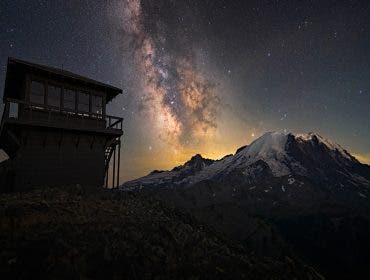Right now, there seems to be a huge trend on social media of shooting “rollers.” For those unfamiliar with the phrase, a “roller” is a shot of a moving vehicle from another moving vehicle. In this article, we will dive into how to use some of these readily available tools to create a motorcycle roller of your own, keeping in mind three simple steps to get the best shots and keep everyone safe.
In the past, these shots involved a complicated setup that would cost hundreds of thousands of dollars to own or thousands a day to rent. As with most aspects of filmmaking, as technology has advanced, the equipment has become cheaper, smaller, and more accessible. What once required a special car and dedicated crew can now be shot on a bicycle with a single operator.
The Gear
Technology has come a long way from what we had in years past. However, the gear we choose is still of utmost importance in pulling off a successful motorcycle roller. It is also critical to not only have the gear but also the knowledge to properly install and operate it. The gear is split into three categories, camera, support, and monitoring.
Camera
For the camera, we were using the LUMIX S5IIX. It is a lightweight option while still packing a load of helpful features. Features like a 5-axis body image stabilizer (B.I.S.) and 6.5, stop Dual I.S. 2 stabilization, and 14 stops of dynamic range. The most helpful feature for this shoot was the motorcycle subject detection, which was released in the latest firmware update.
Support

To support and control the camera, we used a DJI Ronin RS3 Pro connected to a Tilta Hydra Alien Car Mounting System. The Ronin typically provides enough stabilization in scenarios that need pitch, roll, or yaw correction but when it comes to rollers. Vertical motion also needs to be taken into consideration. This is where the Hydra Alien comes into play. Once calibrated to the proper weight, it will counteract most vertical motion and vibration from the car.
Monitoring
To control and monitor the system, we used a Small HD Indie 7, connected to Accsoon CineEye 2S Pro (item no longer available), to see what the camera was looking at. To control the Ronin, we paired that to the DJI Ronin app. This allowed us to control the Ronin with a PS4 controller.
There is a lot of gear involved in this particular type of shot. It’s important to do a few dry runs with it all set up to work out any issues before the shoot. One thing to note: Our crew ran into a problem with the wireless systems. It worked out fine when we were in a less populated area of Brooklyn, but when we went into Manhattan, we had trouble with those wireless systems and realized it would have been better to hardwire in if we had the time.
The Route

Motorcycle rollers are a great way to focus on a subject, but to get a great shot, the background needs to match the tone of what you are looking to convey. Planning the route is essential for two reasons. The first is preparing for the visuals. In most of the shots in our video on AdoramaTV, we scouted the locations ahead of time to help show the scale of the motorcycles in the city.
The other need to plan out the route ahead of time is so you can share it with your talent. Safety is extremely important on shoots like this. This means planning the route ahead and sharing with your talent. This will allow them to take into consideration their vehicle and movements. If they see any issues, they can let you know ahead of time so you can plan accordingly or make adjustments as needed.
Communication
Finally, the last part of a successful motorcycle roller shoot is communication between the crew and talent. For our crew, we had three: a driver, the DP, and an assistant. Shooting a motorcycle roller is a bit different when it comes to communication. With cars, it’s easy to have a phone or walkie-talkie, but oftentimes, motorcyclists do not have comms in their helmets. Only one rider had helmet comms in our shoot.
If you do have comms, giving directions and positioning the subject where they need to be in the frame is easy. For the rider who did not have comms, we sat down beforehand and, after going over the route, came up with a series of simple hand movements that our assistant would signal out the window to the rider. The three moves were to speed up, slow down, and adjust lane position.
Conclusion
These types of shots are great for b-roll, action sequences, and really any moment where you need to highlight something moving at speed. There are a lot of options on the market to pull these types of shots off at any budget. If you keep safety as a top priority, plan the route, know your gear, and have solid communication, you will be able to shoot your next motorcycle roller without issue.






